Doaa Ahmed
LiFCal: Online Light Field Camera Calibration via Bundle Adjustment
Aug 21, 2024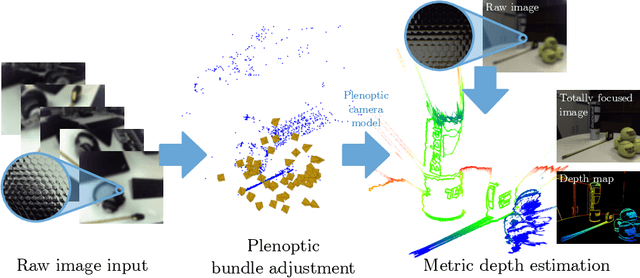
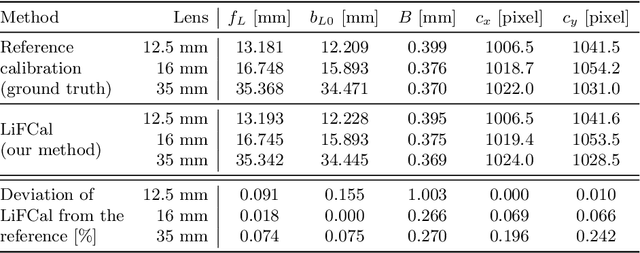
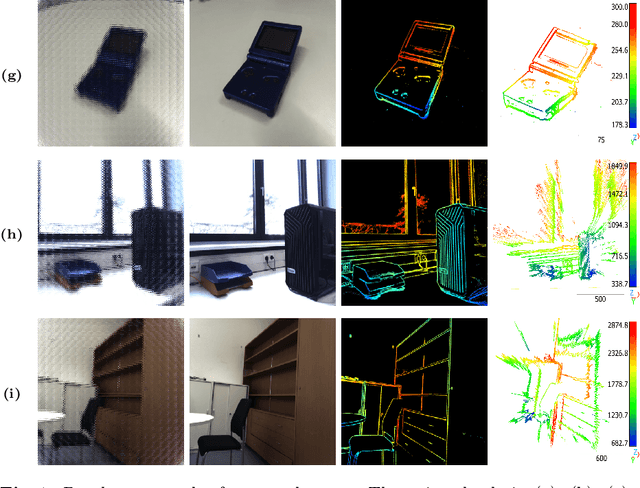

Abstract:We propose LiFCal, a novel geometric online calibration pipeline for MLA-based light field cameras. LiFCal accurately determines model parameters from a moving camera sequence without precise calibration targets, integrating arbitrary metric scaling constraints. It optimizes intrinsic parameters of the light field camera model, the 3D coordinates of a sparse set of scene points and camera poses in a single bundle adjustment defined directly on micro image points. We show that LiFCal can reliably and repeatably calibrate a focused plenoptic camera using different input sequences, providing intrinsic camera parameters extremely close to state-of-the-art methods, while offering two main advantages: it can be applied in a target-free scene, and it is implemented online in a complete and continuous pipeline. Furthermore, we demonstrate the quality of the obtained camera parameters in downstream tasks like depth estimation and SLAM. Webpage: https://lifcal.github.io/
A High-Level Comparison of Recent Technologies for Massive MIMO Architectures
Dec 22, 2022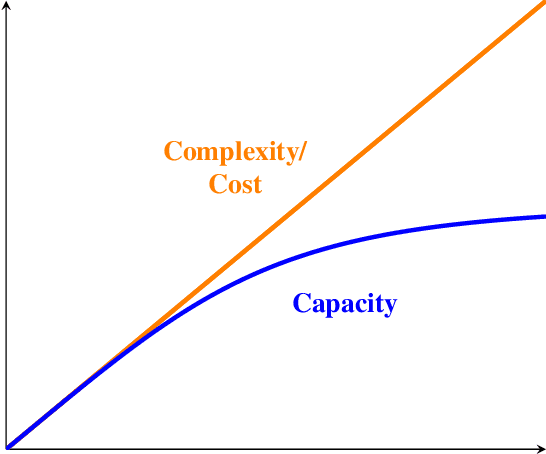
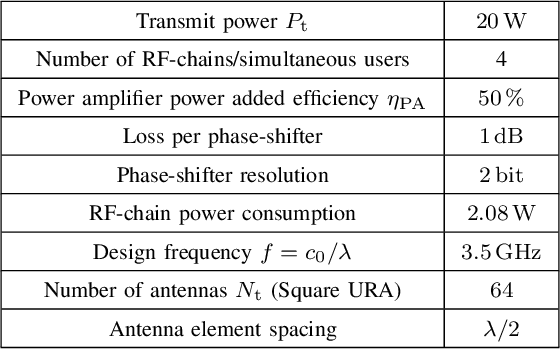


Abstract:Since the introduction of massive MIMO (mMIMO), the design of a transceiver with feasible complexity has been a challenging problem. Initially, it was believed that the main issue in this respect is the overall RF-cost. However, as mMIMO is becoming more and more a key technology for future wireless networks, it is realized, that the RF-cost is only one of many implementational challenges and design trade-offs. In this paper, we present, analyze and compare various novel mMIMO architectures, considering recent emerging technologies such as intelligent surface-assisted and Rotman lens based architectures. These are compared to the conventional fully digital (FD) and hybrid analog-digital beamforming (HADB) approaches. To enable a fair comparison, we account for various hardware imperfections and losses and utilize a novel, universal algorithm for signal precoding. Based on our thorough investigations, we draw a generic efficiency to quality trade-off for various mMIMO architectures. We find that in a typical cellular communication setting the reflect/transmit array based architectures sketch the best overall trade-off. Further, we show that in a qualitative ranking the power efficiency of the considered architectures is independent of the frequency range.
 Add to Chrome
Add to Chrome Add to Firefox
Add to Firefox Add to Edge
Add to Edge